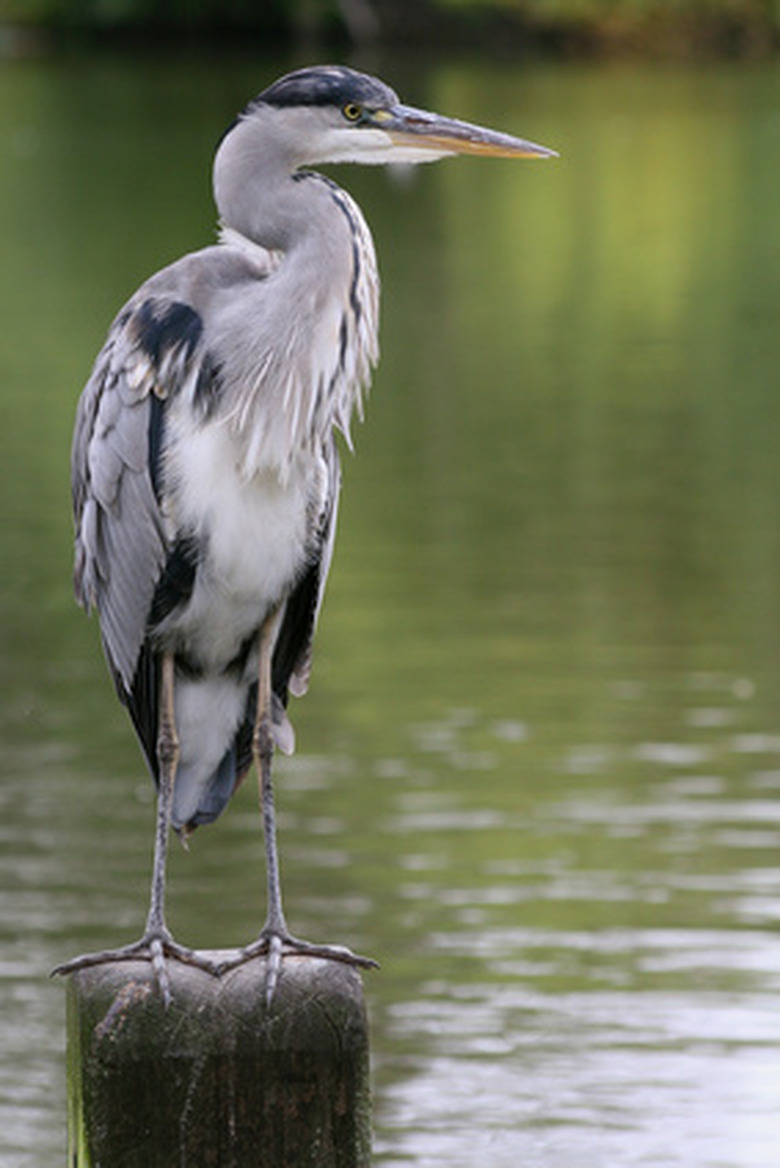Lifespan Of The Great Blue Heron
Life expectancy in birds is closely related to their physical size, and the great blue heron (Ardea herodias) is a prime example. The great blue heron is the largest heron species in North America and has an average lifespan of 15 years in the wild.
Record Lifespan
Record Lifespan
The oldest great blue heron recorded was believed to be over 23 years old. Most blue herons do not live that long; they have a surprising number of predators for such a large bird. Raccoons, eagles, hawks and bears all readily feed on great blue herons.
Mortality Rate
Mortality Rate
While great blue herons may live a long life for a bird, many herons never survive to maturity. Over 67 percent of great blue herons die within their first year.
Reproduction
Reproduction
Great blue herons become sexually mature after 22 months. Females lay clutches of two to seven eggs in the spring. Females and males alternate sitting on the eggs to incubate them. The eggs hatch within a month and, after two months of care, young blue herons leave the nest to fend for themselves in the wild.
Cite This Article
MLA
Campbell, Damien. "Lifespan Of The Great Blue Heron" sciencing.com, https://www.sciencing.com/lifespan-great-blue-heron-6911733/. 22 November 2019.
APA
Campbell, Damien. (2019, November 22). Lifespan Of The Great Blue Heron. sciencing.com. Retrieved from https://www.sciencing.com/lifespan-great-blue-heron-6911733/
Chicago
Campbell, Damien. Lifespan Of The Great Blue Heron last modified March 24, 2022. https://www.sciencing.com/lifespan-great-blue-heron-6911733/
